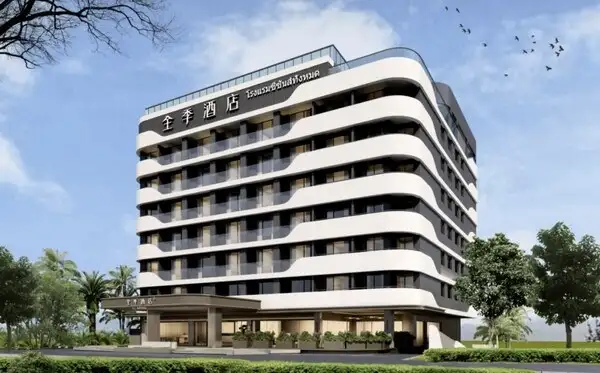
Hotel News: Strong Growth in Japan While Southeast Asia Stumbles
The hotel industry across the Asia Pacific region delivered a somewhat optimistic performance in April 2025, though the landscape was uneven. Out of 16 major hotel markets tracked, 10 countries reported increases in occupancy, average daily rate (ADR), and revenue per available room (RevPAR). The real story, however, lies in the divide—while some nations soared, others like China, Singapore, and Thailand struggled notably. Regional demand was influenced by shifting public holidays and religious observances, including Ramadan, Easter, and Passover, which altered travel behavior significantly.

Image Credit: StockShots
Japan emerged as the undisputed leader in the region, driven by the seasonal allure of the Cherry Blossom season and the ongoing Osaka Expo 2025, which began in mid-April and is set to run through October. This Hotel News report finds that Japan saw its highest occupancy levels in over a year, bolstered by a favorable yen-to-dollar exchange rate that’s starting to lose steam but still offers appeal to foreign tourists. Taiwan and South Korea also performed well, with Taiwan’s Taipei region and South Korea’s Seoul and Busan markets posting gains in both occupancy and ADR.
China Faces Growing Pains Amid Supply Surge
China painted a different picture. Despite being the largest hotel market in the region, its RevPAR dipped due to slumping occupancy rates, driven largely by the rapid increase in hotel room supply. Regional disparities were stark—while Macau SAR and the resort city of Sanya posted double-digit RevPAR gains, heavyweights like Beijing and Shanghai saw declines. Beijing’s performance was dragged down by falling ADR, while other cities like Shandong and Jiangsu struggled with softening occupancy.
Central South Asia Shows Resilience and Momentum
In stark contrast to Northeast Asia’s mixed results, Central South Asia saw robust growth. India stood out as a powerhouse, with all 17 of its tracked markets reporting occupancy gains. Cities like Mumbai, New Delhi, Bengaluru, and Rajasthan posted double-digit RevPAR growth. Maldives continued its high-end dominance, sustaining one of the region’s highest ADRs. Sri Lanka also turned the corner in April, notching its first month of positive performance this year—a promising sign for the island nation’s slow recovery.
Southern Hemisphere Enjoys a Seasonal Boost
Australia, New Zealand, and Fiji had a solid showing in April, buoyed by the onset of cooler weather and favorable currency conditions. The weakened Australian dollar made the region more attractive to international travelers, particularly from the United States. Australia’s New South Wales region led the charge with double-digit RevPAR growth, while New Zealand posted solid gains in South Island submarkets. Fiji, after a weaker March, rebounded with support from leisure travel during Easter and Passover.
Thailand Hotels Struggling Despite Regional Upswings
Southeast Asia’s performance was fragmented, and the most worrying trend was Thailand’s ongoing struggle. Vietnam and Indonesia recorded strong RevPAR increases due to both rising ADR and occupancy. Jakarta and Bali led Indonesia’s bounce-back from a sluggish March, while all seven tracked submarkets in Vietnam reported gains.
However, Malaysia and Singapore posted weaker yet positive RevPAR figures—driven solely by improved occupancy. Singapore, while having the region’s highest ADR and occupancy levels, experienced a slight pullback from March highs.
Thailand, alongside the Philippines, faced the brunt of regional headwinds. Both countries saw drops in occupancy, with only marginal gains in ADR. In Thailand, major hotel destinations like Bangkok and central regions saw significant occupancy slumps and modest ADR declines. While southern destinations like Phuket reported a slight RevPAR increase, it was mainly due to price adjustments rather than demand recovery. The disconnect between hotel room supply and travel demand continues to plague Thailand’s hospitality sector, raising concerns about sustained recovery amid regional competition.
Thailand’s Ongoing Tourism Crisis Requires Rethinking
Thailand’s underperformance in April, despite a region-wide travel surge, is not just a statistical blip—it reflects deeper structural issues. Oversupply in Bangkok and key tourist provinces, sluggish international arrivals outside of peak weeks, weak domestic travel, and uneven promotional efforts have created a challenging environment. Competing destinations like Japan and Vietnam are not only drawing away traditional tourist markets but are also better capitalizing on global travel demand post-pandemic.
For a country that once prided itself on being the tourism capital of Asia, these sustained struggles are a wake-up call. Hotel operators, policymakers, and tourism bodies must now confront the growing imbalance between supply and demand, recalibrate their strategies, and embrace more aggressive and creative solutions to regain momentum.
Thailand’s performance in April is a warning that strong regional growth does not guarantee individual country success. While neighbors benefit from seasonal events, currency advantages, and demand-driven strategies, Thailand’s ongoing stagnation suggests that a more fundamental reset is needed. Without targeted intervention and policy innovation, Thailand’s hotel sector risks falling even further behind in a fiercely competitive market.
The Asia Pacific Hotel Market Trends Report for April 2025 by Costar can be found here:
https://str.com/data-insights-blog/asia-pacific-hotel-performance-update-april-2025
For the latest Hotel Market Trends Report, keep on logging to Bangkok Hotel News.






